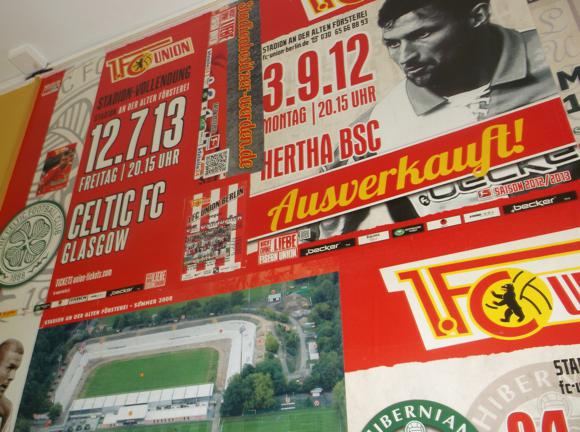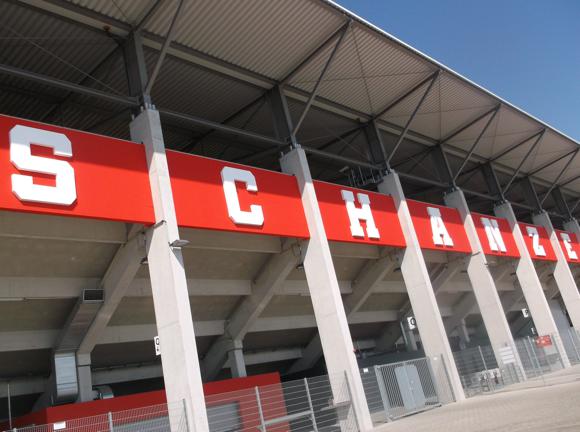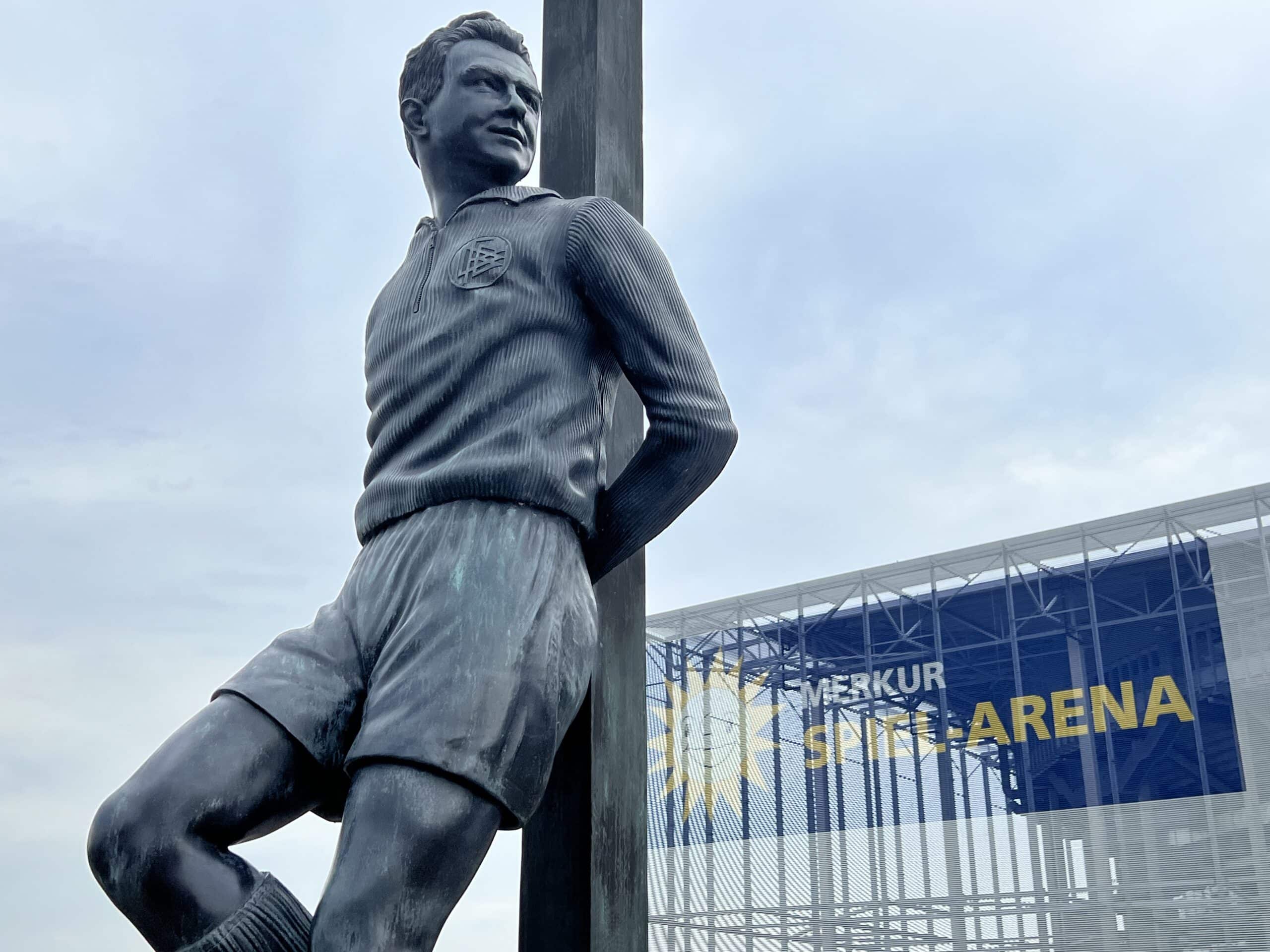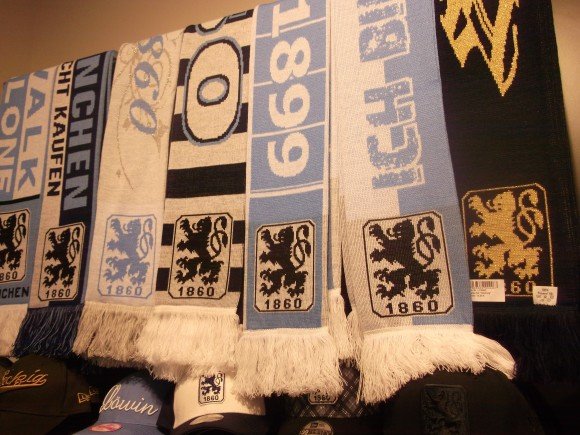The field of dreams – and the story behind it
Germany’s largest sporting arena, the 74,000-capacity Olympiastadion will be hosting the final of Euro 2024, 18 years after the World Cup final of 2006. This elevates the venue to the elite pantheon of stadia used for football’s two showcase occasions – three if you include the Champions League final of 2015.
And four if you throw in the Olympic football final of 1936. The stadium was built, of course, for those tainted Games, organised by the Nazis for propaganda purposes.
Or rather rebuilt. A sports complex had been designed on this site for another Games 20 years before. 1916 was cancelled because of World War I, and architect Otto March died before the Deutsches Stadion was put to full use.





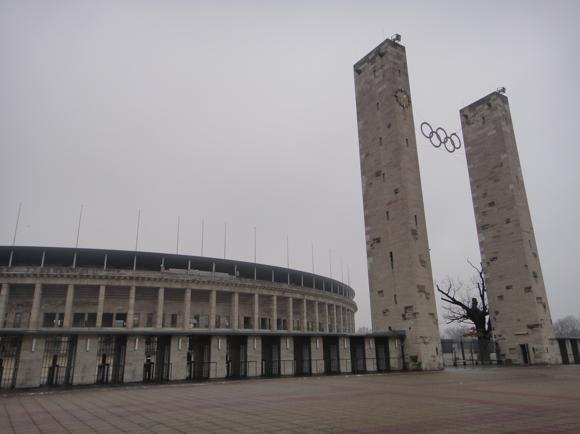


It later staged four German championship finals, one featuring Union and one featuring Hertha, as well as Germany’s first post-WWI international in 1920. Long-distance legend Paavo Nurmi set a world record here in 1926.
It was left to his sons Werner and Walter to create anew when Berlin was re-awarded hosting rights in 1931. Within two years, Hitler was in power and a revised plan was set in stone – natural stone, 30,000 cubic metres of it, transported from all over the nation to symbolise Germanic values.
A titanic 110,000-capacity bowl centrepieced a complex of smaller stadia, a 25,000-capacity amphitheatre and the ceremonial Maifeld, where Mussolini addressed nearly one million Germans in 1937.
A bell tower and clock towers provided the final touch to a grandiose creation that would serve as the stage for black athlete Jesse Owens to rain on Adolf’s parade.
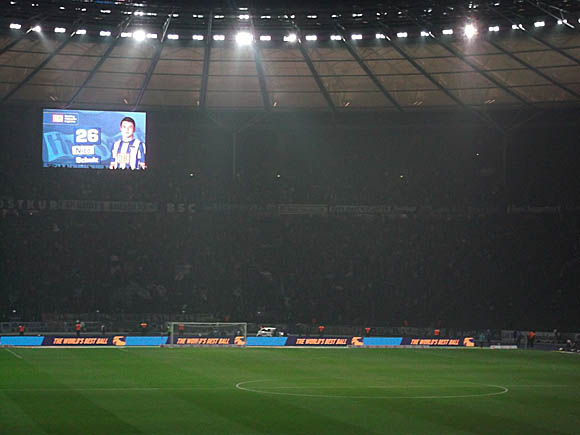





The stadium – though not the bell, cracked right through its swastika emblem – pretty much survived the war, though the Allies made sure to shorten the VIP balcony where Hitler had stood in 1936. This reminded visitors of recent history but lessened the status of those responsible for it.
Ironically, Hitler’s pet architect who conceived of the grandiose alignment of the Marathon Gate, bell tower and Maifeld, Albert Speer, would be imprisoned for 20 years at Spandau Prison, just a couple of kilometres west of the Olympiastadion. Maifeld was later used by Allied forces for sports and ceremonial events.
Invited to join the inaugural Bundesliga in 1963, Hertha moved in, floodlights were installed and West Germany played the occasional international here.
A roof was added when it came to co-host the 1974 World Cup, but by then Hertha had fallen from grace, and the arena was a bit a of a white elephant and historic embarrassment. Capacity was 76,000.
The USSR refused to allow Berlin to be a venue for Euro 88, by which time the German FA had allocated the domestic cup final to Berlin every year. Framed shirts of opposing finalists down the ages line the corridors deep in the bowels of the stadium.




Hertha’s revival, kickstarted by a gala Reunification match against Union in January 1990, prefaced preparations for the 2006 World Cup. The Marathon Gate with its clock tower remained in place for the reconstruction, which lowered the pitch, extended the roof and upgraded the lighting. Spectators, now closer to the pitch, could number 74,500, all agog as Zinedine Zidane headbutted Marco Materazzi in the final.
Having regained Bundesliga status, Hertha averaged gates of 50,000 at this huge arena in 2016-17. Despite relegation in 2023, this figure has hardly wavered, although the club has expressed the firm desire to move out once their contract does, in 2025. How practical this would be, in a city where developers have been swooped after a drop in real-estate prices, remains to be seen.
Hertha’s most faithful following gather in the Ostkurve of this two-tier arena, sectors Q-T – though in reality, all the stadium but guest sectors G and H by the Marathontor will be waving blue-and-white flags. The low curve of seating throughout means an optimum view wherever you are, in the Süd Haupttribüne, Gegentribüne opposite or either Kurve.





getting here
Going to the stadium – tips and timings



The Olympiastadion has two stations. The one on the red U2 line, eight stops from Zoo, gives access to the main walkway lined with souvenir stalls and grills. Just follow the signposts through pre-war underpasses.
The station on the S3/9 S-Bahn, six stops from Zoo, is closer to the arena, the hub of bars on Coubertinplatz and the sectors for visiting supporters for a domestic game. If you’re changing at Westkreuz, platform 1 serves the Spandau branch of the S-Bahn line.
getting in
Buying tickets – when, where, how and how much



Ticket offices are found at either main gate you come to from the U- or S-Bahn stations. Hertha also distribute tickets online, and have several outlets around town, including at the main station, Europa Center and LP12 Mall.
For internationals and the German cup final, you can source through the German-only DFB website.
What to buy
Shirts, kits, merchandise and gifts
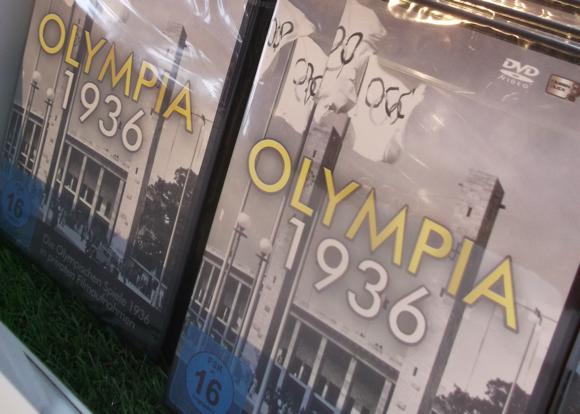


There’s a modest number of stadium souvenirs on offer at the Visitor Centre (daily 9am-7pm except match days and major events) at the Osttor), nearest the U-Bahn station and Olympischer Platz.
On match days, souvenir vans line Olympischer Platz, and Hertha stalls and marquees dot the entrance to the Ostkurve.
Stadium tours
Explore the arena inside and out
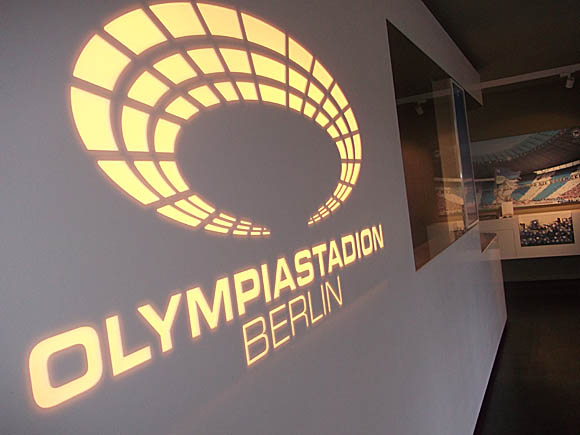
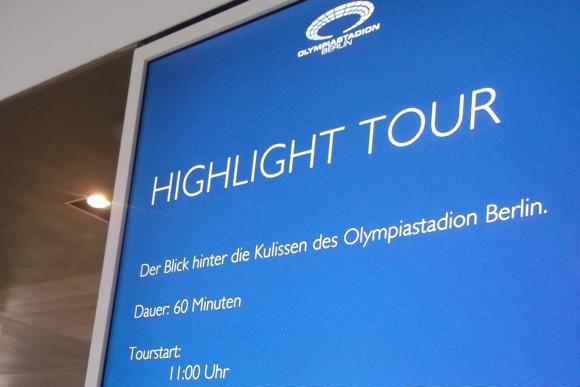

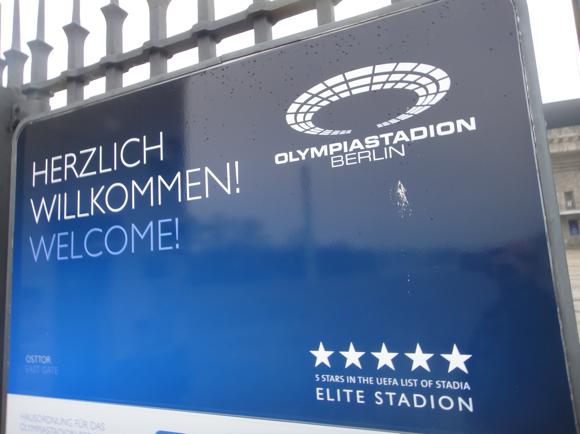
Guided tours take place most days between 11am-3.30pm but do not run if there’s a major event on. During the Euros, only the Summer Stadium Tour (€30, 6-14s €26, under-6s €15) is being offered, 1hr long, with some given in English – check when you book.
The rest of the time, after July 21, the Highlight Tour is more affordable at €15 (€11 for 6-14s, free for under-6s). Again, some take place in English, check when you book. This takes you around the arena, up to Hitler’s truncated balcony and into the dressing room, whose featureless surroundings explain all you need to know about Hertha not belonging here. You also learn how Dieter Hoeneß managed to persuade the stadium authorities to colour the running track blue when he transformed the club as general manager in the early 2000s.
If Elisabeth is your English-language guide, she’s a goldmine of information and helpful with any questions. She also takes you round the statues near the stadium, which commemorate German Olympians from 1896 to 1936.
Also available after July 21 are the two-hour-long Premium Tours (€18, 6-14s €12.50), which delve deeper into the stadium’s architectural heritage and sports facilities. The special (and German-only) Hertha BSC tour is also offered for the same price.
Where to Drink
Pre-match beers for fans and casual visitors


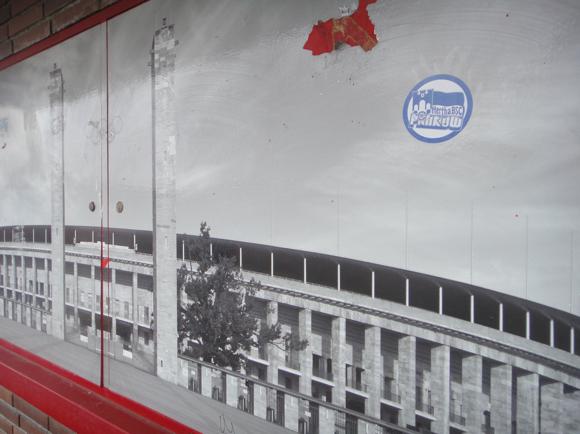

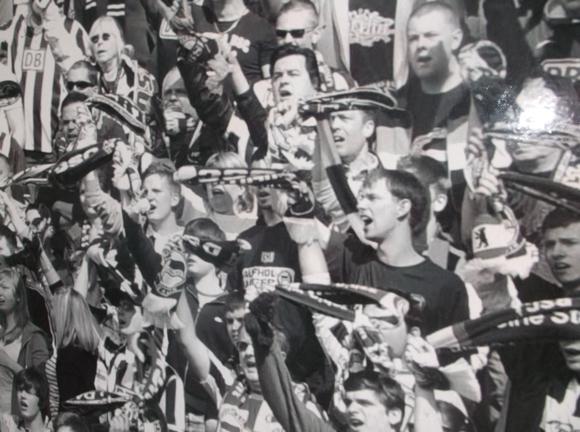

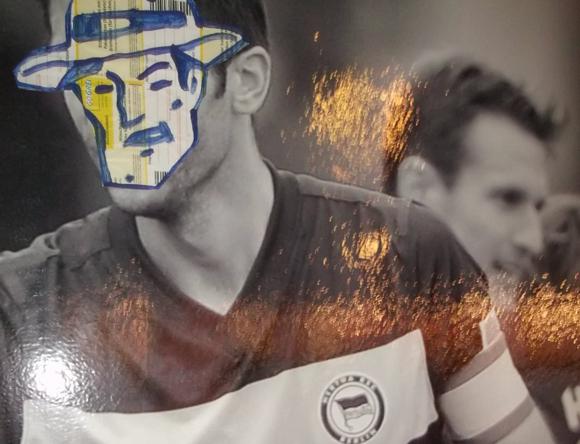




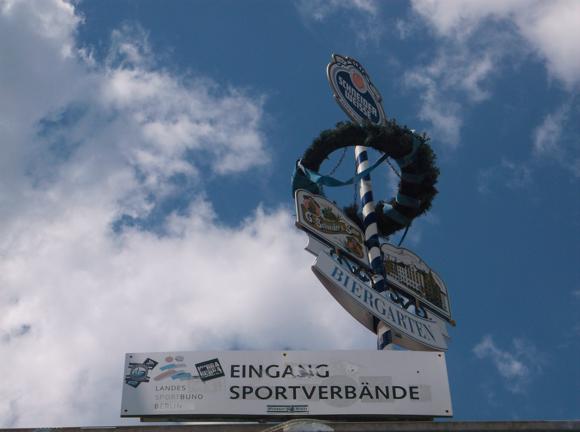
Those arriving by U-Bahn will be immediately faced with two brick huts: to the left, “Zur Blau-Weißen Legende”, covered in well executed Hertha murals; to the right, Berlineya Sektoya, in faux Russian script. Both are basic stand-up kiosks offering rostbratwurst and Berliner Kindl beer. Note that the name of this square is another hangover from 1936: Rossitter Platz comes from the town on a spit of land near Kaliningrad in modern-day Russia, formerly Königsberg before the war.
Diagonally opposite the S-Bahn station stands the Preußisches Landwirtshaus, an authentic, family-run Prussian bar/restaurant comprising a beer garden and a sunken room indoors with a huge screen for sport. Berliner Eisbein (ham hock) and potato soup with bockwurst are typical dishes served after 5pm Mon-Sat, all day Sunday, with special openings on match days.
Nearer the stadium on the same side as this street leading up to it, Stadionterrassen dates back to the days before there was a stadium here at all. Opened in 1909, this was once a coachman’s inn, though it has changed radically since then. Today, it’s a simple restaurant usually open weekday lunchtimes only, mainly patronised by those who work around the stadium or happen to be visiting it. It should open on match days, too.


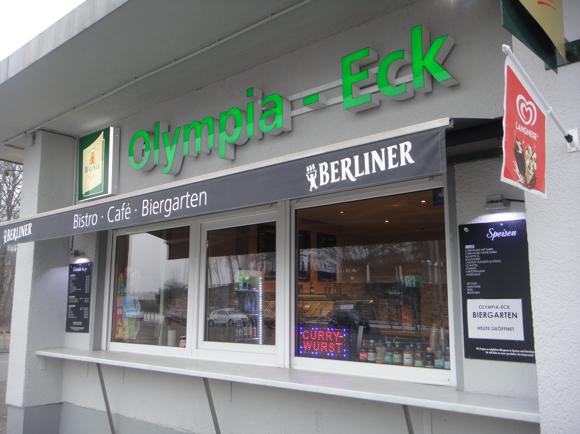





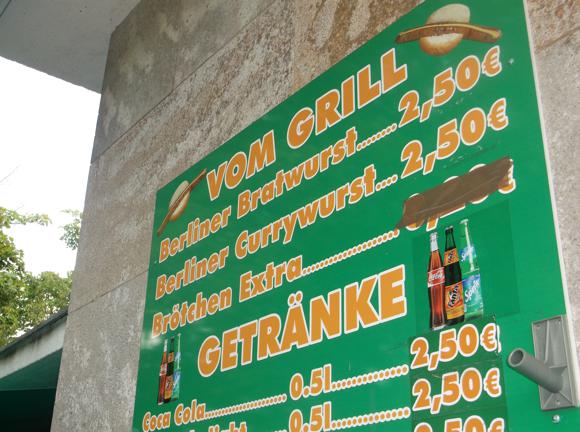


Displayed around the walls, pre-war photos show the stadium in construction, which those serving here back then would have witnessed. At the bar, Bitburger and Schneider Weiße on draught make a welcome change from Kindl. All this sits in the main building of the Berlin State Sports Association, which also features an open-air bar on its roof terrace directly facing the Olympiastadion.
The house itself is still named after Manfred von Richthofen, aka the Red Baron, the ace fighter pilot of World War I, a Prussian hero would have been active when this place was just getting going.
Opposite, Olympia-Eck remains the classic pre-match bar, with a beer garden attached and a basic kitchen with a serving hatch. Inside, you’ll find a lengthy photographic display of the nearby stadium in a cosy dining room. Even though they’ve upped the ante on the food offering and smartened up the surroundings where you tuck into it, it’s still pretty much Currywurst and chips, washed down with Berliner Kindl beer.
Nearby, at another S-Bahn exit on the corner of Trakehner Allee and Gutsmuthsweg, Wurstmax Biergarten also purveys Berlin’s famous Currywurst, sausage in curry sauce, served on a sun-catching terrace.
Inside the stadium, beer is 3% proof Carlsberg – don’t forget the deposit on the glasses.






